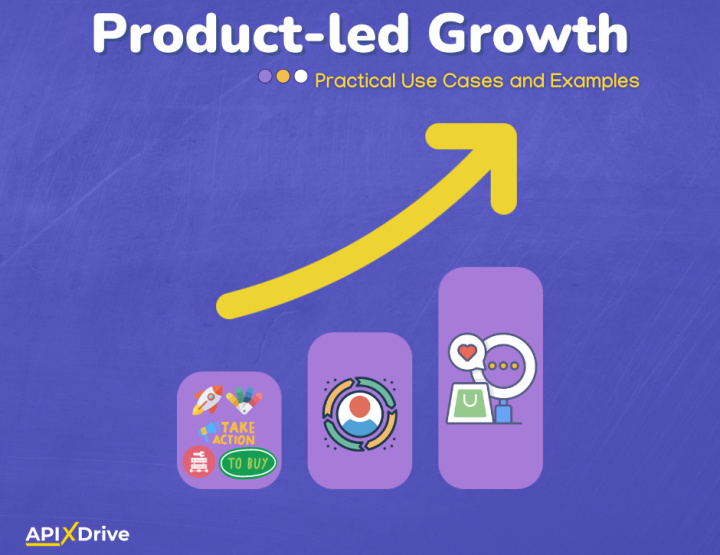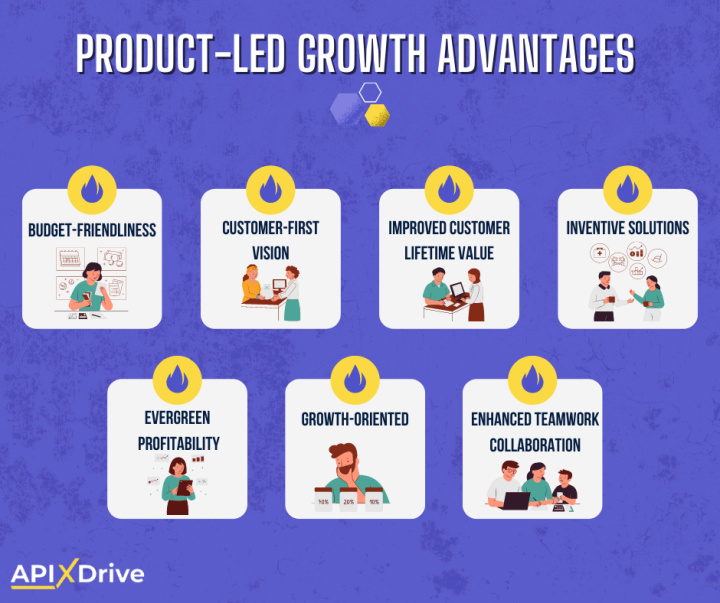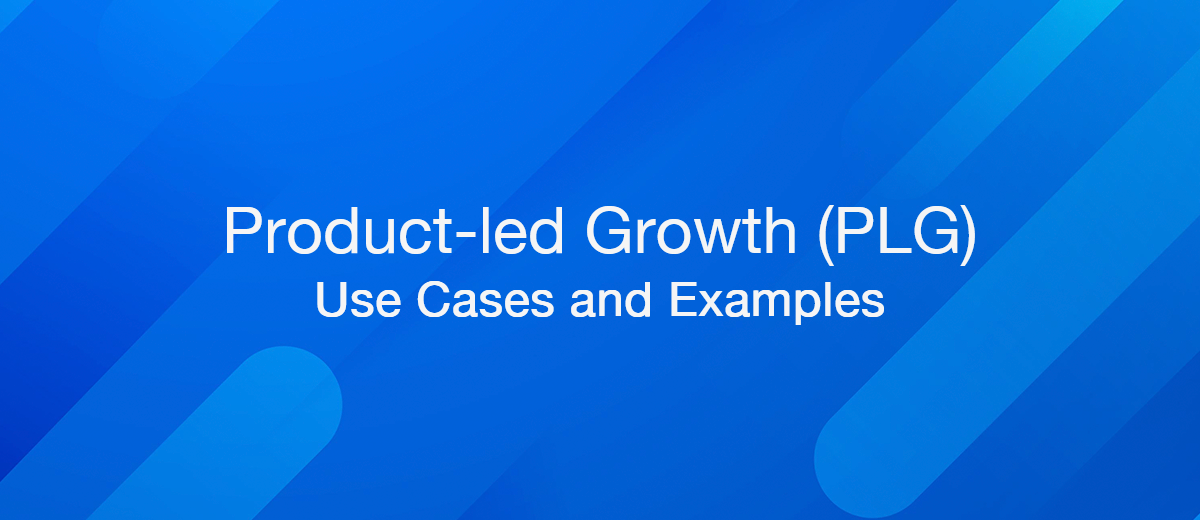What is Product-led Growth? Practical Use Cases and Examples
Product-led growth is a business strategy that has been making waves in the tech industry and beyond over the past few years. At its core, PLG, as the name suggests, involves making the product the central focus of the business model to drive growth rather than opting for marketing and advertising tactics. Businesses can achieve sustainable growth and create long-lasting customer relationships by providing consumers with an intuitive and valuable product. But how does PLG work, and why is it so effective?
In this guide, we'll walk you through the nitty-gritty of PLG, sharing real-life examples and use cases to show you just how impactful this strategy can be for your business. Ready to take the plunge and learn more? Let's dive right in!
What is Product-led Growth?
Product-led growth is a unique marketing approach that places the product front and center as the primary driver of user conversion and retention.
Maximizing product-led growth heavily relies on optimizing the UX of your product. When customers have a seamless experience with your product, they are more likely to share their incredible journey with others, creating a ripple effect of word-of-mouth growth that can leverage the expansion of your business.
That said, it's important to note that this does not preclude using other customer acquisition approaches. In fact, striking a balance between product-led growth and other marketing channels, such as marketing campaigns and advertising, can be a powerful way to reach a broader audience and create a more comprehensive growth strategy that helps strengthen your brand.
PLG Examples and Use Cases

Notion
Notion is a productivity app enabling users to create and organize notes, to-do lists, and manage projects, among other things. The company places significant emphasis on developing a product that is not only functional but also user-friendly, customizable, and adjustable to suit needs.
Unlike typical B2C or B2B SaaS companies, Notion has taken a unique approach to growth. The company relies little on paid ads and instead distinguishes itself by growing horizontally through targeted marketing to a large base of people, segmenting audiences, and highlighting the product's flexibility and the community's power.
Not only does this attract new users, but it also encourages them to evangelize the app to others. This has proven to be an effective way to draw in fresh clients and persuade them to upgrade to a paid plan once they realize the app's value.
Notion's focus on creating an exceptional product and utilizing a freemium model has resulted in sustainable growth over time, propelling the company to a $10bn SaaS startup.
Figma
Figma is a web-based design and prototyping app that has gained a lot of popularity among designers and product teams. The company has focused on creating a product that is easy to use and highly collaborative, allowing teams to work together seamlessly and effectively.
The Figma board decided to give free access to individuals and students to generate a top of the tunnel client base. The idea is to start at the bottom of the market and then move upmarket with a focus on a specific user type.
Figma's revenue overgrew after 2018 when it deployed sales teams to land big accounts. Today, Figma is valued at $20 billion.
Pinterest is a social media platform that allows users to discover and save ideas for projects and interests. The company has invested heavily in developing a product that is both visually appealing and easy to use.
Unlike many other social media companies relying heavily on advertising to skyrocket growth, Pinterest has taken a well-thought-out approach. They prioritize delivering a better product for their users over metrics, making their platform more user-centric. The company has also empowered its growth team to add any features they deem necessary for the product, and this mindset has spread to other groups across the organization. As a result, Pinterest sets cross-departmental goals where the entire company can work together to achieve a common goal. This strategy has enabled them to scale their business and monetize their platform through advertising and other revenue streams.
As of 2023, Pinterest has over 450 million active users and a market capitalization of over $60 billion, making them one of the most successful product-led growth companies in the tech industry.
Key Metrics to Better Track PLG Performance

A PLG approach focuses on offering a second-to-none experience to users and lets word-of-mouth referrals do their magic. However, companies can still track and measure how their strategy is performing. Here are the most common key metrics that companies use to slice and dice their data:
TTV (Time to value):
It refers to how long users can become familiar with the product and its modus operandi. When the TTV period is shorter, it is more likely to result in customer acquisition.
Churn Rate:
Churn points to the percentage of customers who no longer subscribe to a product or a feature after a specific period.


To calculate the churn rate, divide the number of monthly unsubscriptions by the original number of customers at the start of the month and multiply the result by 100.
Net Promoter Score (NPS):
NPS is a metric to gauge customer loyalty and willingness to refer and recommend your product to others. It measures how likely customers are to promote your brand and can be a valuable indicator of customer satisfaction and retention.
Customer Lifetime Value (CLV):
Customer lifetime value (CLV) predicts the total revenue a business can expect from a single customer throughout its relationship with the company.
To calculate the CLV, divide the average revenue per account (ARPA) by the churn rate and then divide that figure by the total number of customer accounts.
Product Qualified Leads (PQL):
PQL refers to the group of users who have experienced your product through a freemium account or free trial and are fully aware of the potential and quality of its features.
Product-led teams consider PQLs more valuable than other qualified leads because they are closer to conversion and provide insights into how users interact with the product, enabling teams to cater to their needs more effectively.
Customer Acquisition Cost (CAC):
CAC refers to the amount of money spent on marketing, sales efforts, and other channels to acquire a new customer.
Companies adopting a PLG strategy often have low customer acquisition costs (CAC) since their users find the product through word-of-mouth referrals or cheap organic channels.
Monthly Recurring Revenue (MRR):
MRR alludes to the amount of revenue generated from subscription-based products or services every month.
Capitalizing on existing customers through product expansion is more beneficial for businesses than acquiring new ones and showcases the value the product adds to the users.
The Many Advantages of Product-led Growth

Product-led growth (PLG) strategies come with a multitude of advantages for firms seeking to enhance their financial standing and maximize their growth. Let's figure out what some of these advantages are.
Budget-friendly:
By relying on word-of-mouth marketing, businesses can significantly reduce the expenses previously allocated to advertising and marketing campaigns for customer acquisition.
Customer-first Vision:
When product-led companies prioritize delivering a unique product experience and maximizing the user-friendliness of their services, they naturally optimize the user experience and boost customer conversion rates way more easily.
Improve Customer Lifetime Value:
PLG approaches are user-centric, and as a result, the products are constantly developed to provide value to the consumer. This will result in a reduced churn rate and an increased lifetime value for customers.
Inventive Solutions:
Product-led growth compels conventional decision-makers to broaden their decision-making process to a broader set of stakeholders. This approach of involving more people in the decision-making process enables a broader scope of innovative ideas and out-of-the-box concepts to be discussed, ultimately sparking greater human creativity.
Evergreen Profitability:
Do you know what every business wants? To generate a steady stream of income over an extended period of time. That's why product-led companies prioritize building a strong and sustainable customer base that can continuously create cash flow, making this business model an evergreen source of profitability.
Growth-oriented:
Because PLG strategies focus on product usage and the value it provides to customers, businesses don't need to resort to other traditional channels for customer acquisition, as customers have already experienced the product's value.
Enhanced Teamwork Collaboration:
Adopting a product-led growth methodology enhances collaboration, which results in more efficient and productive teams. Teams will effortlessly pull in the same direction when aligned to get stuff done.
The Bottom Line
There you have it! Implementing a product-led growth strategy is the way to go. Now that we've covered the ins and outs of it. Remember to optimize your customer's journey by addressing their concerns and thriving to meet their ever-changing needs. This way, maximizing your product experience will come naturally.
Routine tasks take a lot of time from employees? Do they burn out, do not have enough working day for the main duties and important things? Do you understand that the only way out of this situation in modern realities is automation? Try Apix-Drive for free and make sure that the online connector in 5 minutes of setting up integration will remove a significant part of the routine from your life and free up time for you and your employees.

